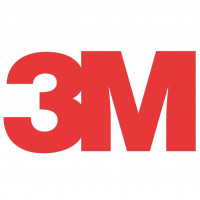-
Hong Kong SAR
Copyright © 2025 Powered by BCI Media Group Pty Ltd
Confirm Submission
Are you sure want to adding all Products to your Library?
Contact Detail
08 Sep 2021 by 3M - Fall Protection Solution

You first need to identify all of your spaces and then you must plan to have the right training, equipment and people so that you can safely handle all of the entries to and exits from confined spaces. When planning for confined space work, it’s a good idea to begin by asking yourself:
There are many health and safety considerations with confined space — checkout this permit-required confined space checklist to help you during your evaluation.
Supervision
The degree of supervision needed should be based on the findings of a thorough risk assessment. In many cases, this assessment will identify a level of risk that requires the appointment of a competent person who will need to supervise not just the entry, but who may need to remain present while the work is being conducted and completed.
Hazard exposure needs to be constantly updated based on what is being done at the worksite or facility and what conditions workers are being exposed to that may present a danger. Remember, a hazard assessment needs to be conducted every single time someone is going into a confined space. Conditions may change, whether it be gas levels or any other danger, that need to be accounted for before anyone enters the space.
Competent Person for Confined Space Work
In order to be work safely in a confined space and serve as a competent person, workers must have adequate training to work within a confined space and should have experience in the work they will be involved with. Training must be appropriate to the task, and to the individual’s roles and responsibilities so that work can be performed safely.
Management of Critical Equipment for Confined Spaces
Personal Protection Equipment (PPE) and your access and rescue equipment can mean the difference between getting in and out safely or not. This equipment needs to be the right equipment and should be inspected and maintained based on the manufactures requirements or company policies. Do you have all your PPE inventoried so you know if it is in compliance with appropriate standards and regulations? Is it expired? Broken? Does it need to be replaced or repaired? Retrieval systems, lines, winches, harnesses, respiratory equipment and gas detection should all be routinely checked to ensure they are in good working condition.
Have you thought about an inspection and asset management system that can help you keep track of your PPE and these potential issues? Many different types of PPE now come with RFID chips that can be used to help keep track of inventory and signal when they should be checked to make sure they are in good working order.
Testing and Monitoring the Atmosphere of a Confined Space
Prior to entry, the atmosphere within a confined space must be tested to check the oxygen concentration and to determine the presence of hazardous fumes, gas, vapors and what the levels are of each within the space. Do you have proper gas detection instruments to do this task adequately? This may include portable area monitoring instruments, fixed area monitoring or other types of devices that will give you accurate readings.
Additionally, if gas purging is needed, proper procedures should be followed to eliminate the hazard and then levels should always be checked again to see if the process was effective. The air needs to be safe to breathe for everyone entering this space.
For additional resources and product information available to help you handle and plan for these tricky situations, please visit www.3m.com/confinedspace.



